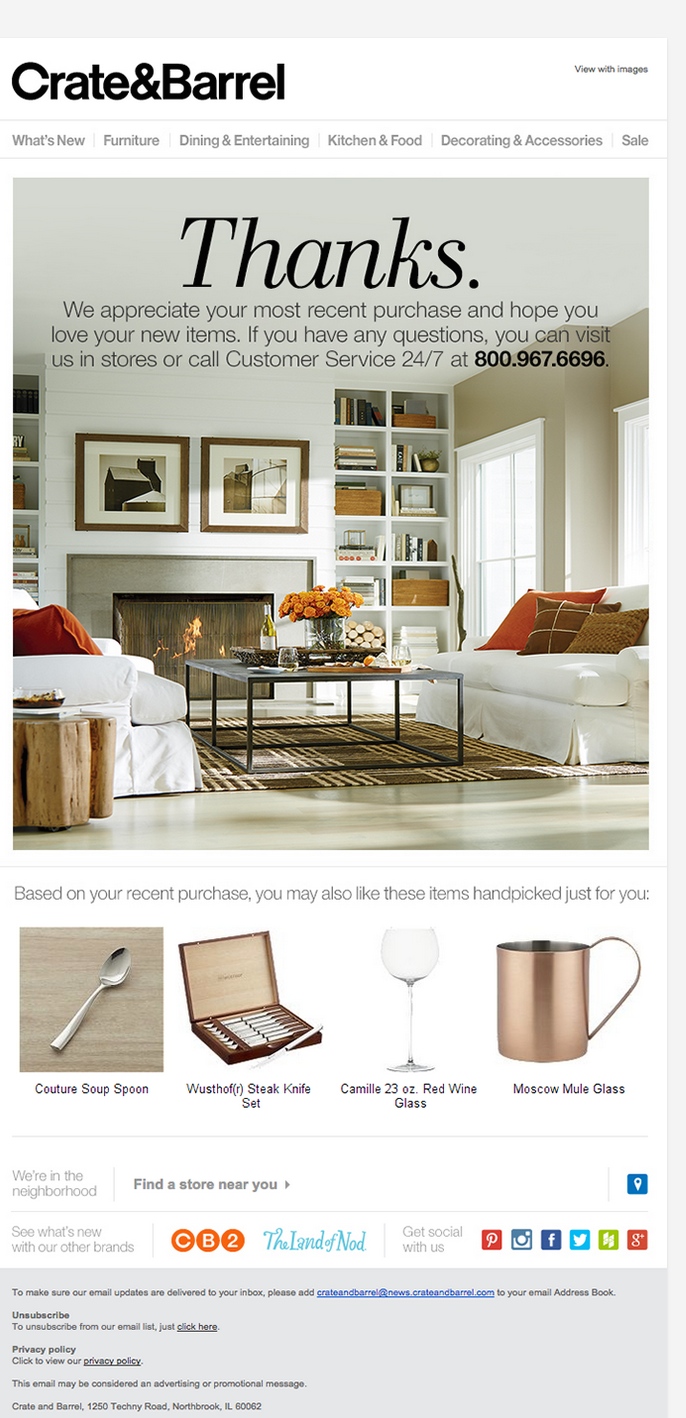
7 Ways to Use Marketing Automation to Grow Your Business [GUIDE]
We know that small business owners have no shortage of tasks on their daily to-do lists, and we’re here to help you shorten it even more.
Implementing automated features make attracting and maintaining customers a snap. In this guide, we’ll cover the specific automated steps you can implement for email and social media marketing. Before we start, let’s talk about the top four benefits of automation so you understand why it’s so valuable:
1. Save time
One of the biggest benefits of automation is that it allows you to save lots of time. By setting a few marketing emails on auto-delivery, you won’t have to create and send individual emails every time you need to communicate with your list. If you use an automated platform for social media updates, you can schedule a series of posts at one time.
2. Reach customers in a timely manner
By using automated features, you’ll reach your customers quickly. For example, you can automate a welcome email that is sent 24 hours after a new contact is added to your list. This guarantees that new contacts get valuable information about your business in a timely fashion, even while you sleep.
3. Ability to work ahead
As a small business owner, it’s vital to ‘work ahead’ as much as possible. With automation, you can set up emails and social media posts in advance.
4. Turn prospective customers into paying customers
Automating some of your marketing tasks can help you convert interested customers into paying customers. In fact, a report published by Regalix showed that nearly 86 percent of businesses believe marketing automation is one of the most efficient ways to nurture and manage new leads.
Are you convinced yet? Excellent! Now let’s get down to the nuts and bolts of it all. Here are seven ways you can properly utilize marketing automation:
1. Capture emails through sign-up forms
Before setting up automation, we suggest setting up an email sign up form on your business’s website. These simple forms help you collect names and email addresses from interested customers or clients.
The steady stream of new contacts that comes in through this form will give you an authentic list of email addresses to draw from to send emails to. Your efforts to build your email list should be ongoing, and a sign up form is a hassle-free way to keep names coming in with little effort on your part.
VerticalResponse has an email sign up form that you can use. It’s simple to set up and activate, and all of your new contacts go right into your VR account. From there you can automate emails to send out to your new and existing contacts.
If you prefer, you could also use a third-party service to create sign up forms that work as pop ups, sidebars, or sliders on your site.
- Consider trying OptinMonster. If you’re using WordPress, ThriveThemes has a plugin you can use to collect customer information. Both of these sites make it easy for small business owners to establish “information collection points” on their websites. There is a cost to use these services, but you don’t need any website or coding experience to get started.
2. Automate welcome emails
With a sign up form in place, one of the first marketing items you’ll want to automate is your welcome email. Since every new contact receives a welcome email, it makes sense to automate it.
If you decide to use the VerticalResponse sign up form to collect email address, the new contacts are automatically added to your list. You can go into your account, create a welcome email and set it up to deliver the warm greeting within 48 hours. You want to make sure that new contacts receive a welcome email shortly after they sign up for your email list, while their interest is still peaked.
The welcome email should outline the perks of receiving messages from your company and include links that direct customers back to your website.
If you need help creating a welcome email, we have several resources to check out:
- 10 Examples of Highly Effective Emails
- 7 Tips to a Stellar Welcome Email
- 7 Reasons Your Business Needs a Welcome Email
3. Send a series of event reminders
Let’s say you have an event coming up or a big promotion. You can use automation to set up a series of emails that reminds your audience about it.
For example, when an insurance broker is hosting a day of free consultations, the owner should set up three emails to automatically send to customers. The first email describes the event in full; the second email is a reminder to sign up for a specific time slot before the consultation day is booked. A day before the event, a third email encourages people to take advantage of the few openings left and adds an incentive of free coffee and donuts.
All three of these emails can be created ahead of time and sent over the course of two weeks. All of the emails should include links back to your website where customers can find out more information.
You can apply this same concept to an upcoming sale, a charity event, a customer appreciation event or an appearance at a local trade show. The idea is to set up a series of emails that reminds your audience about a particular event.
4. Treat your loyal customers
Segment your list by pulling out the names of your most loyal customers and develop an automated email campaign that focuses on rewarding them. Consider writing an email that ‘Gives Thanks’ to your repeat customers for their loyalty and offers something in return. Maybe it’s a 10% off coupon, a voucher for a free service, the chance to be the first to try a new product, discounted shipping or some other kind of gift. You can set this email up to go out every other month for six months to encourage your loyal customers to keep buying.
For inspiration, take a look at this email from Ghurka, a leather accessory store, which honors loyal customers.
5. Encourage active customers to buy again
You can also automate a series of emails to entice recent buyers to buy again. If a customer has made a purchase or signed up for a service within the last 2-3 weeks, put them in their own group and prepare to create an automated email series specifically for them.
For example, in the first email you can thank them for the purchase and showcase additional merchandise you have in stock. Here’s an example from Crate&Barrel:
The second email could offer a discount on a similar product or announce the arrival of a new accessory. The second email could also be a gift guide that highlights several of your hottest items.
6. Bring old customers back
Similar to encouraging recent customers to buy again, you should also think about ways to re-engage inactive customers too.
Take a look at your email list and pull out the names of customers who haven’t purchased anything from your business in the past 6-8 months. Create a series of emails that are designed to get them back on your bandwagon.
The first email can simply say, “We miss you” and include a special offer. The second email, which you should send a week later, could contain a survey asking why the customer has strayed. The survey results can also offer valuable insight that you can use to maintain customers in the future.
7. Automate your social posts
With your email automation underway, you can now switch gears to social media automation. If your business uses more than one social site, you can use a social media management tool to automate the process.
Management tools let you schedule posts ahead of time, which drastically reduces the number of times you have to log in, create messages, and post them. With automated tools, you can set aside an hour per week and schedule posts for the entire forthcoming week.
For time-strapped business owners, automation prevents social neglect. After all, you don’t want your customers to get used to a minimally updated Facebook page or sparsely posted tweets.
So, which social media automation tools are the best? There are several options. It’s important to note that all of these apps offer a free plan, so definitely take them for a test drive and see which one fits your business before committing long-term.
- HootSuite. This app syncs with several social media platforms including Facebook and Twitter. You can access all of your social accounts from one dashboard.
- TweetDeck. If you’re an avid Twitter user, TweetDeck can help you schedule posts and monitor feeds.
- IFTTT (If This Then That). For the more advanced social media user, IFTTT is a great option simply because there are more automation features to choose from with this one. As an example, you can easily link it to your business blog, and when a new post is added, a tweet will automatically go out to advertise the new content.
You can also turn to content curating platforms. These tools give you a list of content that is relevant to your readers and enables you to share it with little fuss. This way you don’t have to scour your feeds looking for valuable content to share; the search is already done for you.
- Swayy and Pocket are good content curation apps to start with. All you need to do is enter a list of general topics that you’d like to see in your feed and you’ll immediately get dozens of content options in your search findings. As you share this content, each platform hones in on your preferences and gives you more specific content that’s tailored to your needs over time.
A word of caution
Automated marketing is a fantastic tool for small business owners, but you’ll want to use it in moderation. Not everything can, or should be scheduled in advance. For example, when breaking news happens that’s relevant to your industry, you’ll want to create day-of social media posts and emails. When a new employee comes on board, or you’ve decided to run a last-minute sale, you won’t be able to rely on automation either. Just remember, like any other resource, automation is another tool you can keep on your pegboard and use it as needed.
Share with us on social which parts of marketing you currently automate and how it works for you.
Want more marketing tips like this? Sign up for the VR Buzz – our weekly newsletter that gives you advice on all things marketing for small and medium businesses.
© 2015 – 2018, Contributing Author. All rights reserved.




